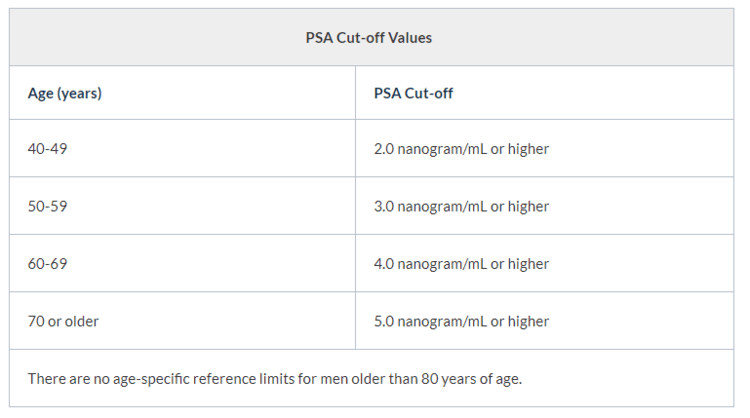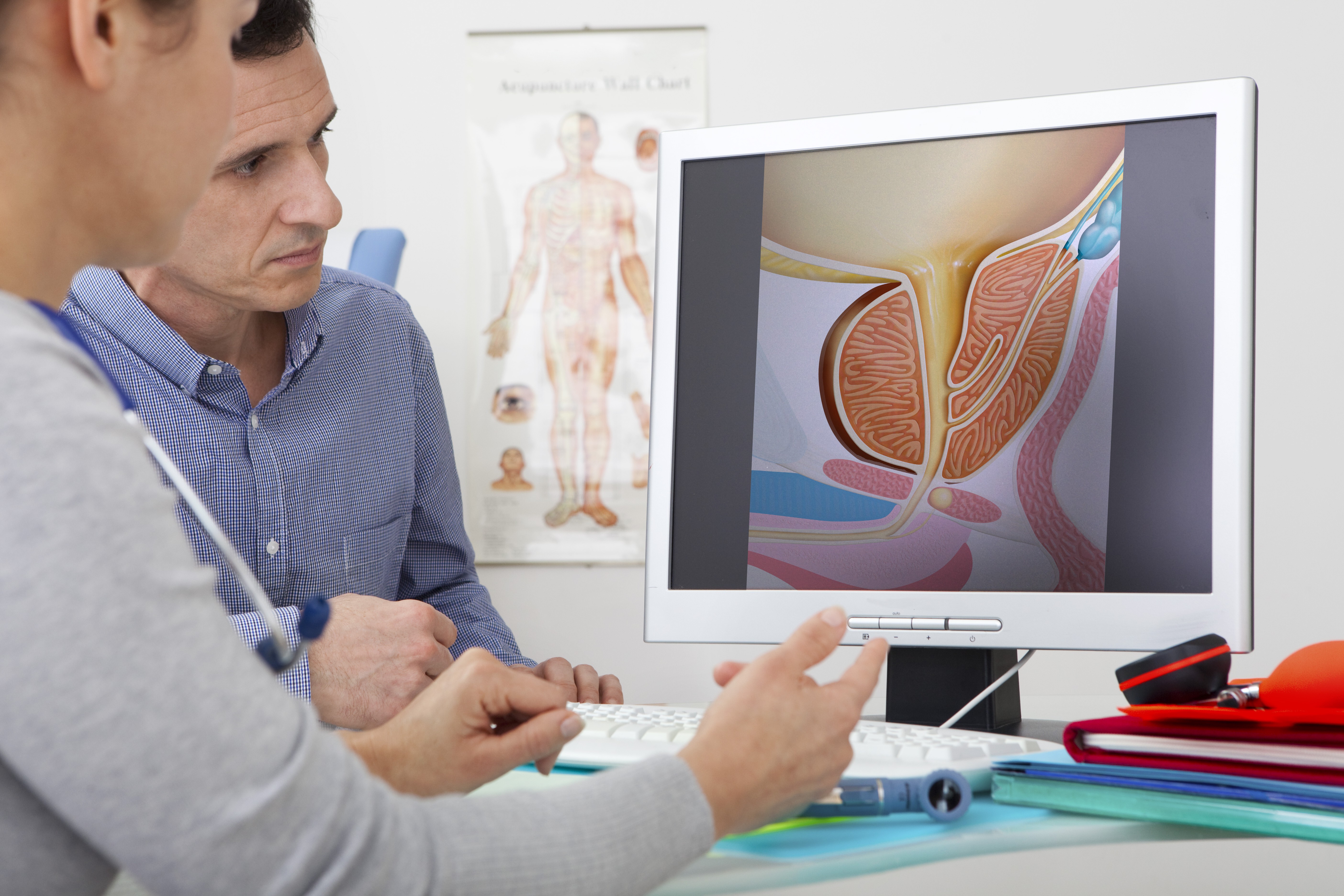Benign prostatic hyperplasia (BPH) is a prostate enlargement without malignancy present and it is normal with advancing age. It seems likely that the nature of BPH is a failure of apoptosis (natural programmed death of cells) and that some of the drugs used to treat it may induce that process.[1]
The prostate secretes about 20-30% of the volume of seminal fluid. It is a hormone-dependent gland and BPH does not occur in castrated men.
BPH affects the quality of life of about 40% of men in their fifth decade and 90% of men in their ninth decade.[2]It is unusual before the age of 45 and affects men of Afro-American origin more severely than white men, possibly due to higher testosterone levels, 5-alpha-reductase activity, androgen receptor expression and growth factor activity.
History should focus on a number of specific features that are typical of the disease. This should be followed by the IPSS to give an assessment of the effect on the quality of life. If surgery seems likely (bearing in mind the age of most men who present with this condition) further questions to assess fitness for surgery may be in order.
WHAT ARE THE SIGNS OF PROSTATE ENLARGEMENT?

Urinary frequency is often a presenting symptom. To understand if you have urinary frequency, ask yourself:
- How many times a day do I need to pee?
- How often do I rise at night to pee?
- Do I pass small or large volumes of urine each time?
Another typical symptom of prostate enlargement is urinary urgency, which presents as a need to evacuate pee rapidly in order to avoid incontinence.
Urinary hesitation happens when you need to stand for a long time before you can urinate. You may stop in the middle of the act due to a poor stream and leaking of urine.
Incomplete bladder emptying provides the impression that there is still urine in the bladder, regardless of how frequently you go. You might even be able to pass further just after you finish.
There may be a need to push or strain, increasing the risk of micturition syncope.

PROSTATE ENLARGEMENT TREATMENT
Read Dr. Nimeh’s recent review of all BPH treatment options here.
FLOMAX
Alpha-adrenergic antagonists, or alpha-blockers, reduce the tone in the muscle of the neck of the bladder. They should be offered to men with moderate-to-severe voiding symptoms (corresponding to an IPSS of 8 or more). Examples of alpha blockers are: Flomax and Rapaflo
FINASTERIDE
5-alpha reductase inhibitor (5-ARI) drugs block the synthesis of dihydrotestosterone from testosterone and can reduce symptoms – eg, finasteride. They do work but it may take several months before benefit is noted. Unlike alpha-blockers, they have been shown to reduce the long-term risk (>1 year) of acute retention or need for surgery. They should be offered to men with LUTS and a prostate estimated to be larger than 30 g or PSA greater than 1.4 ng/mL and a high risk of progression.
TURP
Transurethral resection of the prostate (TURP) is now the standard technique. A working sheath is placed in the urethra through which a hand-held device with an attached wire loop is placed. A cutting diathermy is run through the loop so that it can be used to shave away prostatic tissue.
When successful, it is an excellent operation that does not involve entering the abdomen but it can have complications. Bleeding may be difficult to control. Irrigating fluid may be absorbed into the circulation via cut veins. An indwelling catheter is required until bleeding has stopped. Urethral stricture can occur. There can be retrograde ejaculation after operation or damage to the nerves that can cause erectile dysfunction.
GREENLIGHT PHOTO-VAPORIZATION
Similarly to TURP, a cystoscope is used to gain access and visualization to the prostate. However, unlike a standard TURP, contact is not made with the tissue and the ideal working distance is between 1 and 2 mm from the tissue surface. The laser is swept across the tissue surface until complete vaporization of desired tissue is achieved.
A 532-nm laser is utilized because it is preferentially absorbed by hemoglobin molecules, making it ideal for vascular tissue such as the prostate.[10] Tissue vaporization occurs when energy from the laser is absorbed by the hemoglobin within the target tissue.
Advantages of this procedure over TURP include technical simplicity, minimization of complications, and ability to treat larger glands with less physiological stress. The postoperative management typically involves analgesics and limited strenuous activity for 1 week. A catheter is used for bladder drainage and is typically discontinued after 1 day.
UROLIFT
The Urolift is a prosthesis that resembles a small suture connected to an anchor that is implanted under endoscopic guidance with the aim of retracting the prostatic urethra toward the prostatic capsule to open the prostatic urethral space. It is constructed from two tabs, a stainless steel urethral tab and a nitinol capsular tab. A needle is deployed transurethrally beyond the prostatic capsule and delivers suture based implants that are placed under tension. This mechanically retracts the prostatic lobes to open the prostatic urethral space.
This procedure can be performed on an outpatient basis under local anesthetic block. Urolift has been found to have significantly lower morbidity than other surgical treatments for BPH-associated LUTS. Documented complications include hematuria, dysuria, and bladder spasms.
An expanded Australian multicenter study was performed in 2012 that evaluated 64 patients who received the Urolift procedure with follow-up up to 2 years. This study found a reduction in IPSS scores from a mean baseline of 22.6 to 12.6 after 2 years. Peak flow rate at 2 years increased to 10.3 mL/s from a baseline of 7.4 mL/s. Retreatment was necessary in 20% of men treated and included either photoselective vaporization of the prostate or TURP.


